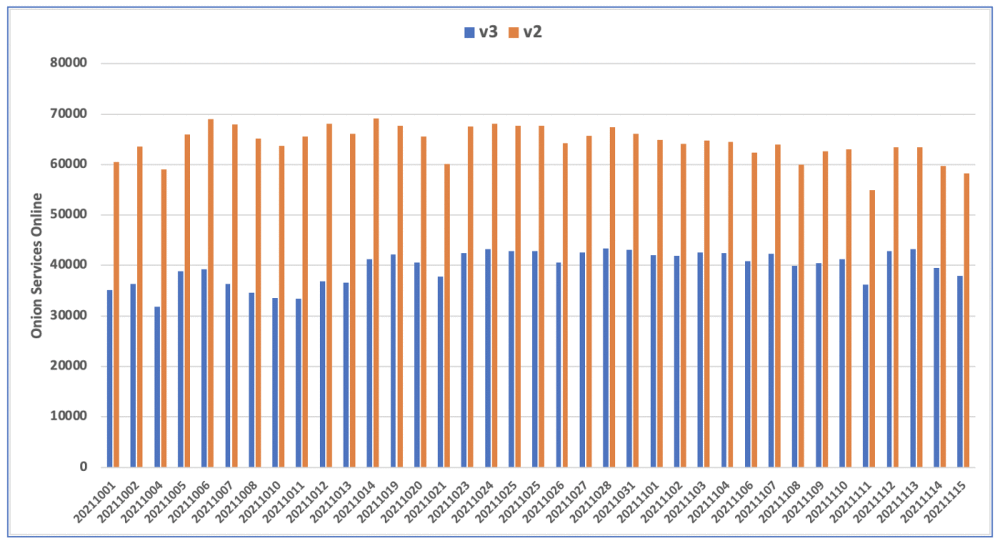The Tor Project recently ended support for 16-character .onion domains, also known as v2 addresses, and replaced them with 56-character domains known as v3. Researchers have counted how many sites have already switched to the new standard.
The change was long overdue and was intended to improve the privacy, security and resilience of the Tor network, including against attacks involving the de-anonymization of users. These changes were announced as far back as last year, meaning that the entire transition process took over a year.
- September 2020: The Tor Project developers released Tor version 0.4.4, which warned server operators that support for v2 domains would soon be discontinued.
- July 2020: Tor 0.4.6 was released, which prohibited server owners from registering new v2 domains.
- October 2021: Stable versions were released for all Tor branches that did not support v2 domains.
- November 2021: Tor Browser 11 was released, which permanently removed support for v2 domains.
Alas, despite all this preparation, experts at DarkOwl, a darknet monitoring company, report that the Tor network still largely consists of servers running the old v2 links domains.
“Over the past six weeks, the DarkOwl Vision platform recorded an average of 104,095 active .onion services running both standards, of which 62% were v2 addresses and 38% were v3 addresses,” the experts wrote.

DarkOwl writes that in July 2021 there was a surge in the creation of new v3 domains, which coincided with Tor Project warnings that began to appear before v2 domains were accessed. As a result, more than 2,900 v3 domains were registered in the last two weeks of July alone.
The growth continues now, as new v2 domains can no longer be registered, but users can still access existing sites using older browser versions.
Researchers expect v2 sites to finally disappear next year. The fact is that most Tor host operators will upgrade their servers to versions that will no longer support v2 domains at all, and there will be no Tor repeaters capable of routing traffic to older generation domains.

Well, no one wants to change their links wherever they have been left (and it’s impossible). I wouldn’t say it’s unnatural.
But I2P, for example, has address books for short names. You could do something like that in Tor. Although there then have to change the mapping of addresses to names, it’s not ideal, but what can you do when they are constantly improving the format of the addresses. As a half measure, it might be okay.